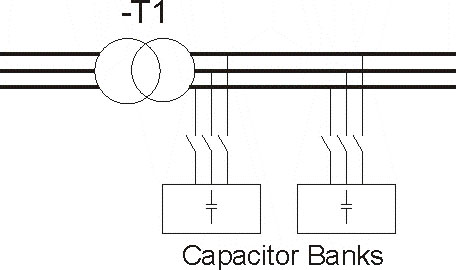|
|
|
Power
Factor What
is it? Power factor compares the real power (watts) being consumed to
the apparent power (Volts-Amps) of the load. A purely resistive load
(incandescent lights, electric heating elements.) would have a power factor of
1.0. All current will cause losses in the supply and distribution system.
A load with a power factor of 1.0 will result in the most efficient loading of
the supply. What
does it do? The
power available to perform work is called realpower (kW). Inductive loads such
as motors, transformers, and high-intensity lighting introduce reactivepower (kVARs)
into a power system. The system capacity is rated by the apparent power (kVA)
which must be large enough to accommodate both the real power (kW) and reactive
power (kVAR). Since reactive power requires system capacity,
but performs no work, utilities and plants try to keep net kVARs low. High
reactive power translates to low power factor. Power
factor correction capacitors supply the reactive power (kVAR) required by
inductive loads. By correcting poor power factor, capacitors reduce kVA demand,
thus off-loading transformers, switchgear and other equipment. The reduced kVA
demand results in lower utility power bills, cooler equipment operation and
longer equipment life. What
are Vermont Utilities required to do ?
•
All Vermont Utilities are required by the regional transmission system to
maintain a 98% power factor on their power lines. As a result of this
requirement, Vermont utilities are requiring their customers to maintain a power
factor of 95%. In addition to this requirement, the measurement of power factor
will change from average monthly power factor consumption to measuring the power
factor on coincident peak. What
is required of you to avoid future penalties ? Power factor correction is achieved by the addition of capacitors in parallel with the connected circuits and can be applied at the switchboard or distribution panel. The resulting capacitive current is leading current and is used to cancel the lagging inductive current flowing from the supply.
Capacitors connected at a distribution board and controlled independently is known as "Bulk Correction". The Power factor of the total current supplied to the distribution board is monitored by a controller which then switches capacitor banks In a fashion to maintain a power factor better than a preset limit. (Typically 0.95) Ideally, the power factor should be as close to unity as possible. There is no problem with bulk correction operating at unity. 
If you are getting penalties for low power factor on you utility bill, call us, we can help. |